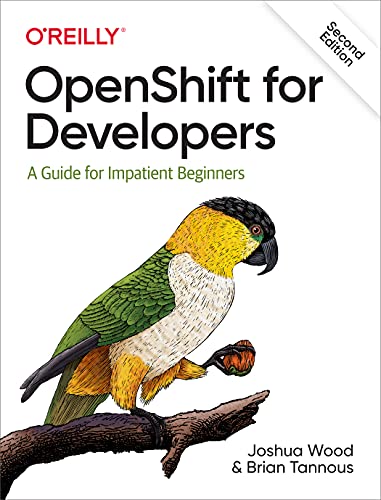Ready to build cloud native applications? Get a hands-on introduction to daily life as a developer crafting code on OpenShift, the open source container application platform from Red Hat. Creating and packaging your apps for deployment on modern distributed systems can be daunting. Too often, adding infrastructure value can complicate development. With this practical guide, you’ll learn how to build, deploy, and manage a multitiered application on OpenShift.
Authors Joshua Wood and Brian Tannous, principal developer advocates at Red Hat, demonstrate how OpenShift speeds application development. With the Kubernetes container orchestrator at its core, OpenShift simplifies and automates the way you build, ship, and run code. You’ll learn how to use OpenShift and the Quarkus Java framework to develop and deploy apps using proven enterprise technologies and practices that you can apply to code in any language.
- Learn the development cycles for building and deploying on OpenShift, and the tools that drive them
- Use OpenShift to build, deploy, and manage the ongoing lifecycle of an n-tier application
- Create a continuous integration and deployment pipeline to build and deploy application source code on OpenShift
- Automate scaling decisions with metrics and trigger lifecycle events with webhooks
What You Will Learn
This book explains what OpenShift is and how to use it to build your applications, run them, and keep them running through changing demand, failure recovery, and a continuous stream of new releases as you iterate on their source code with new fixes and features.
- Chapters 1 and 2 introduce OpenShift, its components, and its concepts.
- Chapter 3 shows you how to run OpenShift on your computer so that you have a virtual cluster to conduct the book’s exercises.
- In Chapter 4, you’ll configure OpenShift to fetch the source code for a simple Hello World application, build it into a container image, and run it.
- Chapter 5 introduces OpenShift Pipelines, a framework for composing Continuous Integration and Continuous Deployment (CI/CD) routines, and shows you how to add Pipelines to your cluster.
- In Chapter 6, you’ll deploy a more realistic application with a tiered architecture and multiple components.
- In Chapter 7, you’ll augment the application’s backend to retain data between sessions.
- Chapter 8 shows you how to examine, manipulate, and scale the running application both manually and automatically, how to set up OpenShift to periodically check application health, and how to govern the rollout of new versions of your application.
- Chapter 9 is a high-level overview of OpenShift’s monitoring and alerting facilities.
- Chapter 10 dissects OpenShift automation features you used along the way to set you on the path toward eliminating toil by letting the platform do the repetitive work.
